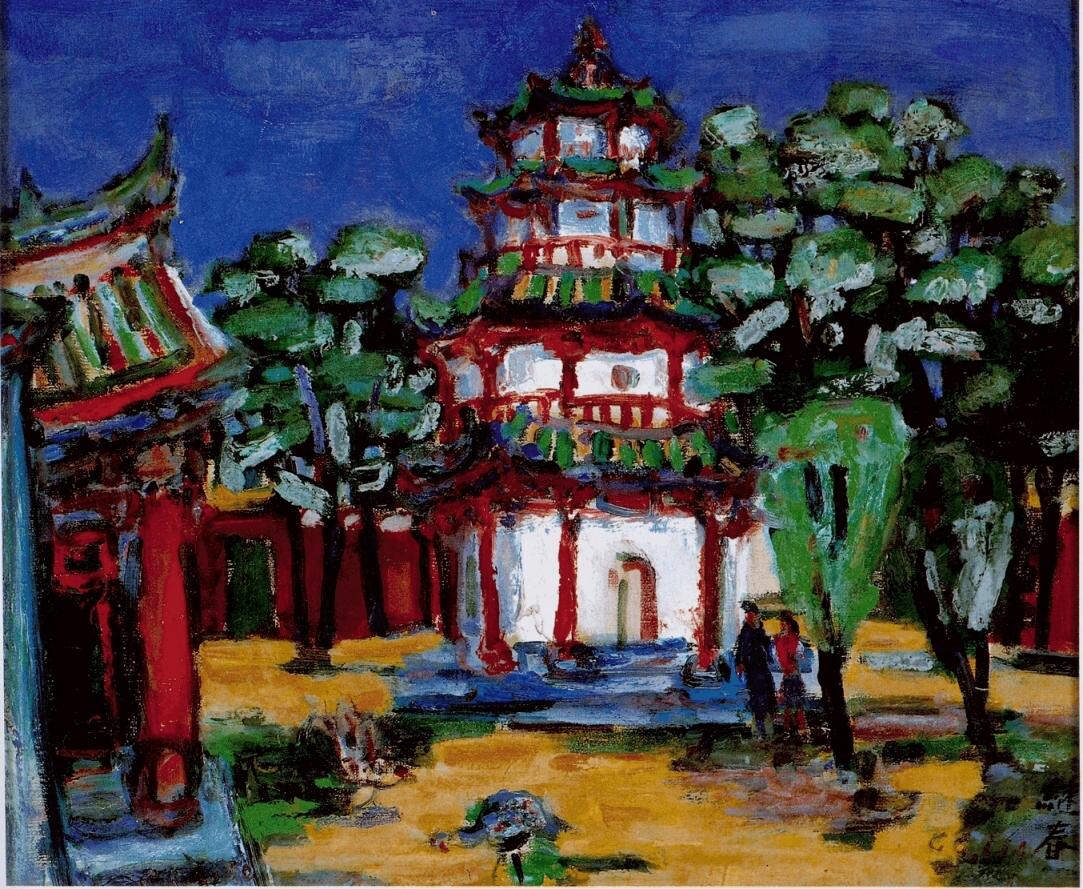=> HOME of Structured Data for Bios
廖繼春 Liao Chi-chun
|
Structured DataLiao Chi-chun
廖繼春
ISNI 0000 0000 6339 6023
Liao Ji-chun
Painter
https://en.wikipedia.org/wiki/Liao_Chi-chun
https://zh.wikipedia.org/wiki/%E5%BB%96%E7%B9%BC%E6%98%A5
http://www.aerc.nhcue.edu.tw/8-0/twart-jp/html/ca-770.htm
Liao Ji-chun (Chinese 廖繼春, 1902.01.04~1976.02.13), was a well-known Taiwanese painter and sculptor.
Born: 1902-01-04
Taichung, Taiwan
Died: 1976-02-13
Nationality: Taiwanese
Relations: Alumni of: Taiwan Governor-General's National Language School
Alumni of: Tokyo School of Fine Arts
Colleague of: Chen Chengpo
Member of: Chidao Association
Taught at: Fengyuan Public School
Taught at: Presbyterian Secondary School, Tainan
Taught at: Girl’s Presbyterian Secondary School, Tainan
Taught at: Taiwan Provincial Normal College (now National Taiwan Normal University)
Important Roles: Creator of: Tainan Confucian Temple (臺南孔廟) (painting)
Founder of: Tai-Yang Art Society
Founder of: Chih-Yang Western Painting Society
Is a character in: La Grande Chaumiere Violette 紫色大稻埕 (2016 TV series)
Award and recognition: Female Nude selected for the 1st Taiwan Art Exhibition (Taiten)
|
Sources and references
- 林惺嶽,〈跨越時代鴻溝的彩虹—論廖繼春的生涯及藝術〉,《臺灣美術全集4‧廖繼春》臺北市:藝術家出版社,1992,頁17-33。
- 顏娟英,〈殿堂中的美術─臺灣早期現代美術與文化啟蒙〉,《中央研究院歷史語言研究所集刊》64:2(1993),頁469-610。
- 李欽賢,《色彩‧和諧‧廖繼春》,臺北市:雄獅圖書公司,1997。
- Starting Out from 23.5°N: Chen Cheng-po, Academia Sinica Digital Center (ASDC). http://chenchengpo.asdc.sinica.edu.tw/friend_en
© Marcia Lei Zeng for Academia Sinica Center for Digital Cultures
